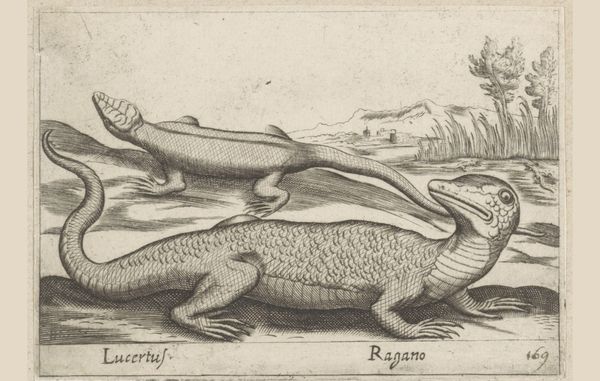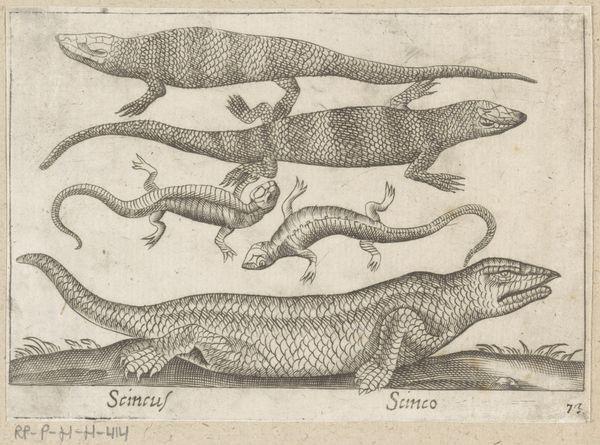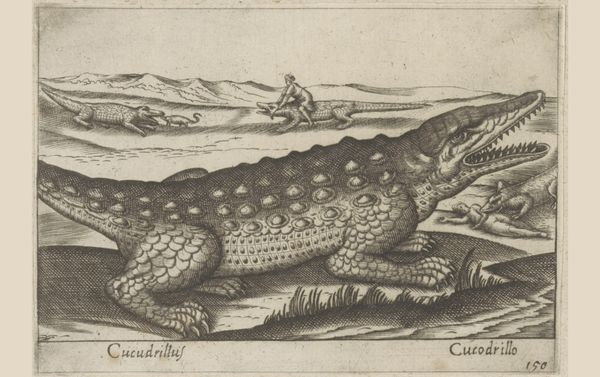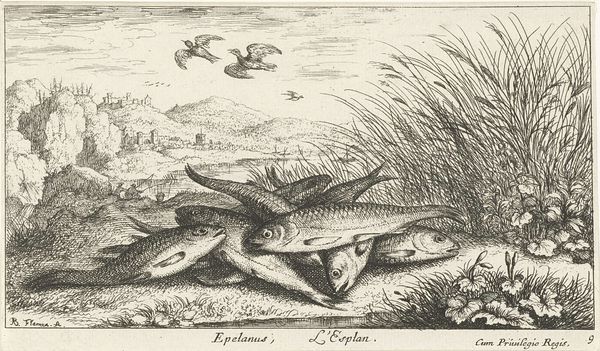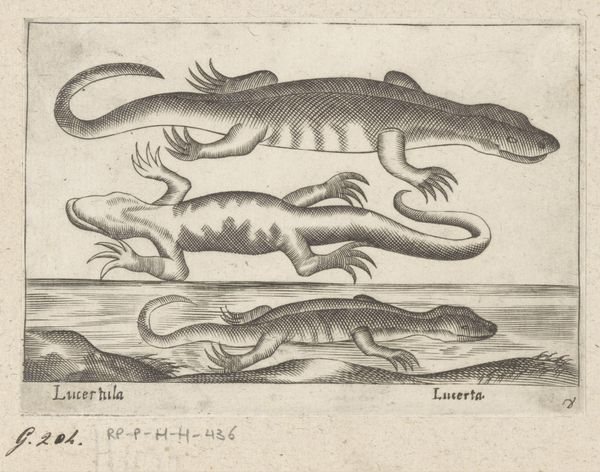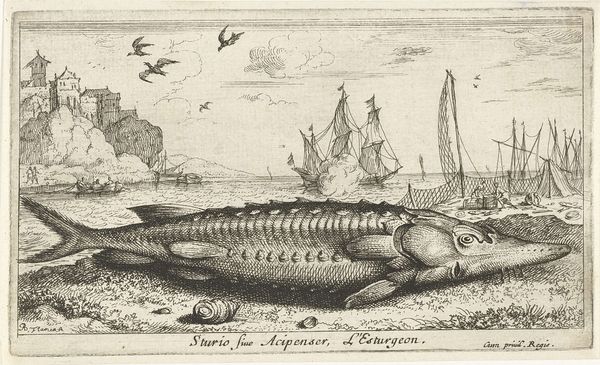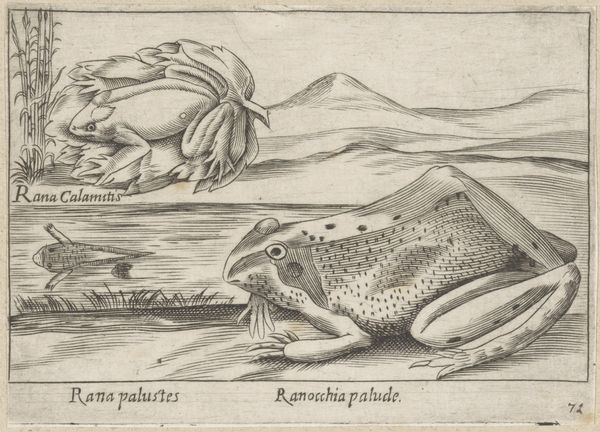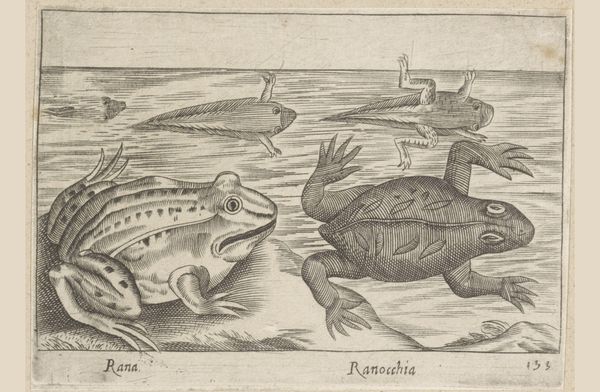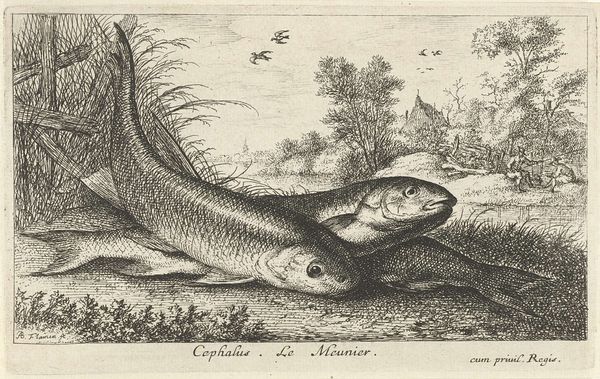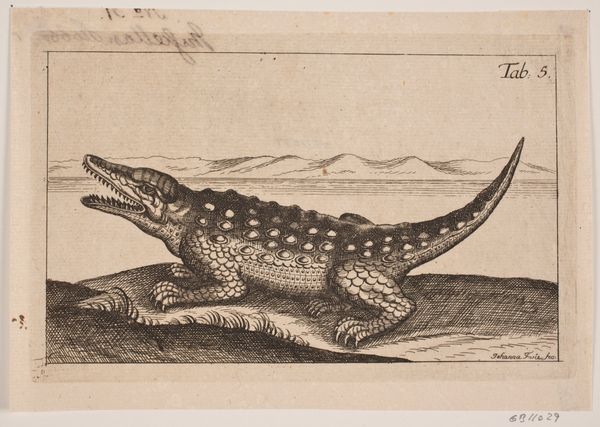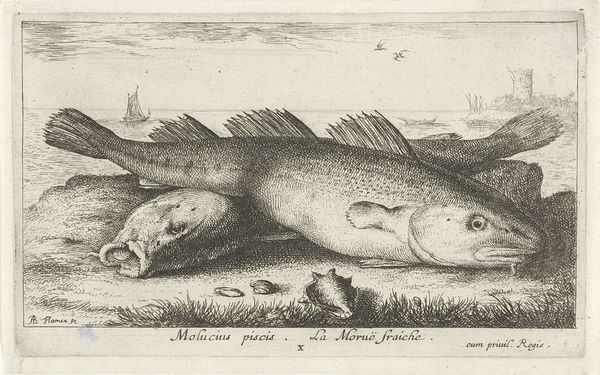
print, engraving
#
baroque
# print
#
old engraving style
#
figuration
#
engraving
#
realism
Dimensions: height 95 mm, width 137 mm
Copyright: Rijks Museum: Open Domain
Curator: Here at the Rijksmuseum, we have before us "Two Lizards" ("Twee hagedissen"), an engraving completed before 1650 by Antonio Tempesta. What's your first reaction? Editor: There's something both charming and slightly unsettling about this. The meticulous detail combined with what appears to be a strange adornment on the lizards…it's fascinatingly peculiar. Curator: Absolutely. The process of creating this print would have been laborious, demanding meticulous carving on the metal plate. The end result gives us this somewhat whimsical take on zoological illustration, though I wouldn’t go so far as to call it scientifically accurate! Editor: I find myself drawn to the landscape details in the background. That small village perched on the hill... against the figures in the foreground I’d even suggest that these lizards were stand-ins, a symbolic microcosm reflecting aspects of human life. The stars decorating one, the chevron pattern on the other... almost heraldic. Curator: Interesting. To me, the adornments indicate that Tempesta may have been concerned more with ornamentation than naturalism, typical of the Baroque style. The level of craftsmanship and skill required would’ve surely been something his patrons understood. Editor: Agreed. However, consider the period: natural history was gaining prominence, yet there wasn't always a clear line between observation, symbolism, and myth. The lizards themselves might embody a number of common concepts in Renaissance symbolism such as regeneration, resurrection, or even deception. Their depictions here, whether stylized or factual, carried inherent connotations. Curator: So, in essence, we see an interesting blend of precise technical skill and rich symbolism that can make this piece appealing to different sets of viewers, regardless of our temporal location? Editor: Precisely. It invites us to explore where science, artistry, and our human need for meaning overlap. Curator: I’d say, understanding the laborious process used, paired with symbolic richness, helps to fully appreciate Antonio Tempesta's artwork here. Editor: A dual perspective, honoring both the art and the ideas it seems to carry. A very baroque way to examine our own values, it seems!
Comments
No comments
Be the first to comment and join the conversation on the ultimate creative platform.
